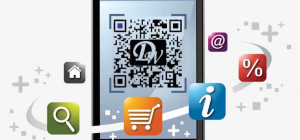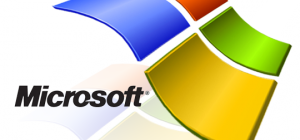 Advertisement spending has seen an upward curve in the recent years. Technology boom in the recent years can be attributed to it. Organizations now are sure about their target audience adding to precision in positioning their campaigns.
Advertisement spending has seen an upward curve in the recent years. Technology boom in the recent years can be attributed to it. Organizations now are sure about their target audience adding to precision in positioning their campaigns.
The year 2017 saw companies spending more on digital marketing as per Magna. To put it in numbers, digital advertisement saw a worldwide investment of $ 209 Billion that is 41% of the total expenditure on adverts. Television ads brought 35% of the total cost at $178 Billion. While traditional platforms like TV will have 2.5% rise over the next year, digital marketing is set to rise by 13% in the same time.
Digital is the way of life all thanks to technological boom attributed to smartphones and tablets. Mobile phones are personal when compared to computers. Apps generate data that is accurate and a better predictor of consumer behavior. When powered with this data spending on advertisements is a well-planned strategy based on data science.
Data Provides Accuracy in Targeting
Marketers today cannot just depend on their gut feeling that a particular campaign will work. Organizations focus on the optimum use of resources and expenditure on advertisement is not isolated from this concept. Data Science can point at current trends, the target demography, consumer behavior with a data backed precision.
The current year will see a short fall of 190,000 data scientists in the US market. However, data at hand is bound to grow with 2.5 quintillion bytes adding to the existing data every day. Marketers need specialists in Data Science more than ever.
Data science allows marketers not just track consumer behavior, but to engage better with the target market by tweaking content. Machine learning under controlled environment helps to predict trends. With data visualization complicated data can be showcased as simple set of graphical representation that aligns marketers and data scientists in an integrated platform.
The Smartphone Advantage
Mobiles have brought in a boom in data quantum and it will increase. Smartphones will generate 10 times more traffic between the years 2016 to 2022. By 2022 average data usage will be 25 Gigabytes per smartphone per month in the US. With this boom, the potential of data generation is immense.
One of the biggest challenges of Data Science is dirty data. Cleaning is a big part of Data Science. However, mobiles are way more personal than any computer. They track user location, social network usage pattern and frequency. Apps have algorithms to understand and predict buying patterns. With AI introduced in mobiles, understanding consumer behavior in a holistic and accurate way will be possible.
Data Science as a Savior
Wrangling data, analyzing is science, but aligning them with marketing strategies is an art. You can have a humungous amount of data, but it can mean nothing if you do not have the right talent and infrastructure in place.
Data Science comes as a savior here, it starts with the mapping of social media sites to get information like location, buying trends, patterns, consumer behavior. It takes in all these information to create a customized consumer experience.
Customer Analytics: Next Step in Marketing Evolution
Marketing has changed from being an aggressive sales centric activity to a customer centric approach and extraction of insights through data science can go a long way in customized consumer experience. Forrester says that 36% of B2C companies use data science on a regular basis to get deeper understanding to enable customer relationship based customer experience.
Customer Value Analytics is coming up as a big influencer and it rides on the back of Big Data. It is a framework of Big Data based technology that boosts revenue cycles, by retention and customization that scales up as per customer preference. An excellent customer service is a keystone of a well thought marketing strategy.
Companies like Coca Cola use CVC to generate awareness through targeted campaigns, create customized product offering and majorly enhance acquisition with a detailed customer profiling data backed strategy. Nestle uses CVC to ensure customer retention by tapping in early on factors that lead to customers churning out and working on a model to counter it.
As per a recent Forrester survey 44% of companies dealing with B2C market base depends on data analytics to enhance responsiveness.
Enhancing Revenue and Return on Investment
Organizations are driven by revenue. Big Data plays a crucial role in laying down strategies that make way for greater revenue and cost saving. A study by DataMeer shows companies use big data most for customer analytics. Moving forward these analytics helps in creating a precise framework for acquisition, enhancing revenue per client, minimizing churning out of customers and customizing existing products to enable customer requirements.
When it comes to revenue, focusing on the correct marketing strategy ensures best return on investment. Biopharma organizations, for example use nearly 20-30% of their revenue on sales and promotion as per McKinsey. Big Data can help here, to create accurate market targeting strategies, it will reduce cost, ensure the money and resources goes at the right place.
If you go by the Chief Marketing Officers across big brands 54% of them agree that data science and big data analytics is pivotal in revolutionizing marketing. Search Engine Optimization, smartphones, marketing through Email are the biggest impact areas as per 58% of them.
Data Science is here to stay and revolutionize the whole marketing scenario with its precision and accuracy in targeting for acquisition, customizing client experience, fueling revenue optimization and increase.
Contributed byhttps://www.dasca.org/







